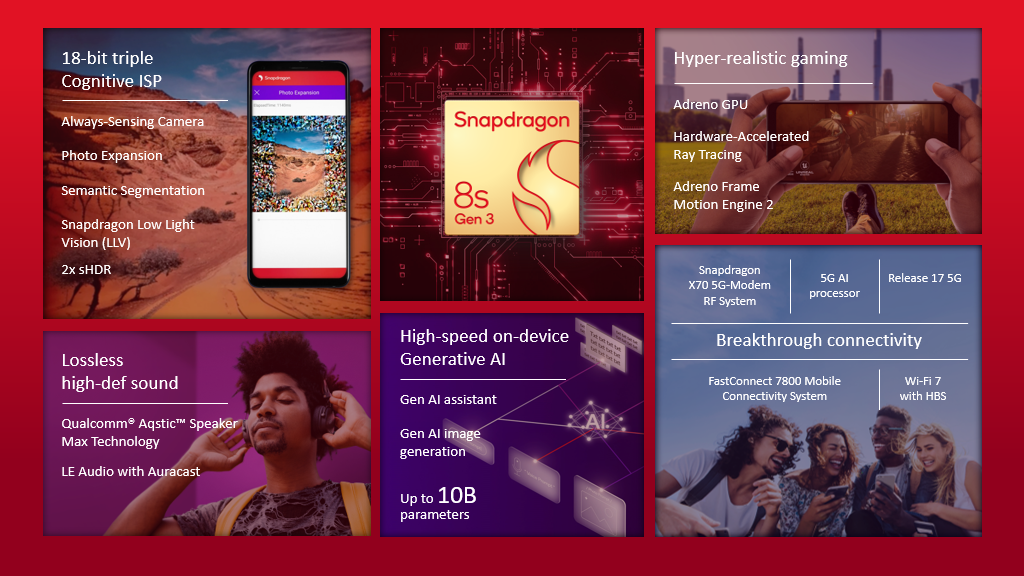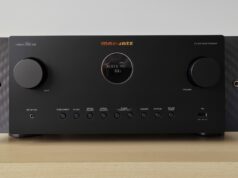Qualcomm has announced a new smartphone chip called the Snapdragon 8s Gen 3, acting as an understudy to the flagship Snapdragon 8 Gen 3 that’s found in all of the best Android phones right now.
These two smartphone chips share an awful lot in common, hence sharing such similar names. However, there are some key differentiating features that you should be aware of before choosing between them.
We’ve broken down the key differences between the Snapdragon 8s Gen 3 and Snapdragon 8 Gen 3 below, so keep on reading to find out how they differ.
Snapdragon 8 Gen 3 is more powerful
If you want the fastest chip possible, then the Snapdragon 8 Gen 3 remains the best option. Qualcomm suggests that the new 8s variant is somewhere between the Snapdragon 8 Gen 2 and Snapdragon 8 Gen 3 processors.
This is backed up by the specs, which you can see in the table below. The 8 Gen 3 has 1x Prime core that can reach peak speeds of 3.4GHz, whereas the equivalent core on the 8s Gen 3 is limited to 3GHz.
| Snapdragon 8s Gen 3 | Snapdragon 8 Gen 3 | |
| Prime cores | 1x (up to 3GHz) | 1x (up to 3.4GHz) |
| Performance cores | 4x (up to 2.8GHz) | 5x (up to 3.2GHz) |
| Efficiency cores | 3 (up to 2GHz) | 2 (up to 2.3GHz) |
The Snapdragon 8 Gen 3 also has an extra performance core compared to its new sibling, demonstrating that it places a greater emphasis on high performance. However, this increased power likely means it will be found in more expensive phones, making the Snapdragon 8s Gen 3 more accessible.
Qualcomm has also revealed that the two chips differ in terms of AI performance, with the Snapdragon 8 Gen 3 proving to be quicker at generating images and text on demand.
Snapdragon 8s Gen 3 is limited to 4K video capture
Fancy yourself a smartphone videographer? Then you may want to consider buying a phone with the Snapdragon 8s Gen 3 if you crave the highest resolutions possible. The 8s Gen 3 is limited to capturing video at 4K at 60fps. That’s still a decent figure, but falls shy of the Snapdragon 8 Gen 3.
The Snapdragon 8 Gen 3 offers support for video capture up to 8K HDR at 30fps, or if you’re happy to lower the resolution, up to 4K at 120fps. This makes it the superior chip for recording video, although the quality of video will also be impacted by the smartphone’s camera system.

Snapdragon 8 Gen 3 has more AI-powered camera features
One of the most impressive aspects of the Snapdragon 8 Gen 3 chip is the number of advanced AI features it allows smartphones to make use of. Unfortunately, not all of these excellent features are supported by the new 8s chip.
The standout exclusive for the Snapdragon 8 Gen 3 is Night Vision video capture, which leverages AI to improve the quality of video taken after dark. Video Object Eraser is also exclusive to the 8 Gen 3, allowing you to remove unwanted objects and people from your video footage.
Vlogger’s View is yet another feature reserved just for the Snapdragon 8 Gen 3, allowing smartphones to shoot video via both the rear and selfie camera simultaneously, which could be useful if you like making reaction videos for TikTok and the like.
Snapdragon 8 Gen 3 has a superior face unlock
One of the most useful features to come to Android phones in recent years is face unlock, which allows users to gain access to their phone without having to enter a passcode, all thanks to the facial recognition sensor.
Qualcomm’s always-sensing ISP allows phones to scan your face without needing to be unlocked beforehand. For the Snapdragon 8 Gen 3 chip, Qualcomm decided to add two of these always-sensing ISPs to improve the accuracy of face unlock, while also allowing the functionality in both the rear and selfie camera.
The Snapdragon 8s Gen 3 is instead limited to a single always-sensing ISP, which means smartphone makers can only use it for one camera. Will this make a big difference? Likely not, but being able to use either camera to unlock your phone or scan a QR code is at least incredibly convenient.











